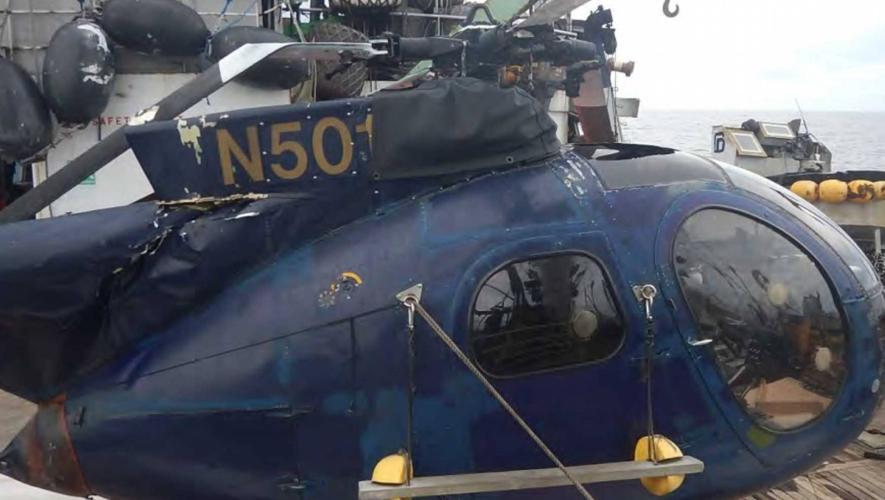Less than two weeks after the July 16 crash of a Bristow Sikorsky S-76A+ (G-BJVX) that killed all 11 passengers and crew when the helicopter apparently lost a main rotor blade and plummeted into the waters of the North Sea, the FAA issued an emergency AD covering all S-76As, -Bs, and -Cs. Preliminary investigations using data from the helicopter’s HUMS (health and usage monitoring) system traced the cause of the blade separation to a lightning strike incurred by the component in 1999. Further examination revealed an incredible coincidence.
Under the terms of the AD, operators must review their S-76 component log cards or other records needed to discover possible lightning strike damage. If a lightning strike did take place or if it cannot be determined one way or the other, then the new AD (2002-15-51) requires that blade be replaced before further flight.
But the story didn’t end there. Subsequent metallurgical analysis of the rotor blade by the UK Air Accidents Investigation Branch (AAIB) showed that the July 16 crash more likely resulted from a flaw deep within the blade that went undetected at manufacture, and that the lightning strike took place at that exact location. The blade in question was fractured at a position 76.75 in. from the blade root. The missing outer blade section was not recovered by the oil-company divers who retrieved most of the S-76A’s wreckage in approximately 120 ft of water. The main rotor gearbox was recovered and found to have a broken casing. Visible evidence pointed to the fact that the gearbox, together with the rotor head, had broken away from the fuselage mountings in flight.
Examined in a lab, the main rotor blade in question was found to have begun fracturing on the upper surface in the area of the inboard edge of the scarf joint between the two-piece titanium leading-edge erosion strip. Microscopic examination of the fatigue-initiation point indicates that it had suffered intense thermal damage. “The area has the appearance of and discoloration similar to an electrical ‘spot weld,’” the AAIB report read. No evidence was found of thermal damage to the surrounding composite materials, resins or paint.
In addition to the lightning strike, evidence was found of an anomaly in the scarf joint between the two titanium leading-edge erosion strips. The tip of the tang on the inboard end of the outboard erosion strip was bent and folded under the outboard end of the inboard erosion strip. This resulted in a doubling of the thickness of the erosion strip material in that area, which in turn resulted in contact between the erosion strip and the blade’s titanium spar.
The rotor blade was manufactured in March 1981. In 1999, while fitted to another S-76A (G-BHBF), it was damaged in a lightning strike. At that time the blade had logged 8,261 hr. Returned to Sikorsky for assessment, it was inspected, repaired and returned to service on G-BJVX. Neither the thermal damage to the spar nor the manufacturing anomaly were detected at this time. At the time of failure the blade had accumulated 9,661 hr of use. Airworthiness limitation of the blade is 28,000 hr.
In its finding, the AAIB speculated on the possibility that more faulty blades, their flaws undetected, could be at large within the S-76 fleet. Nevertheless, the emergency AD that was issued required only a hunt through operational records in search of lightning strikes encountered either airborne or while on the ground.







